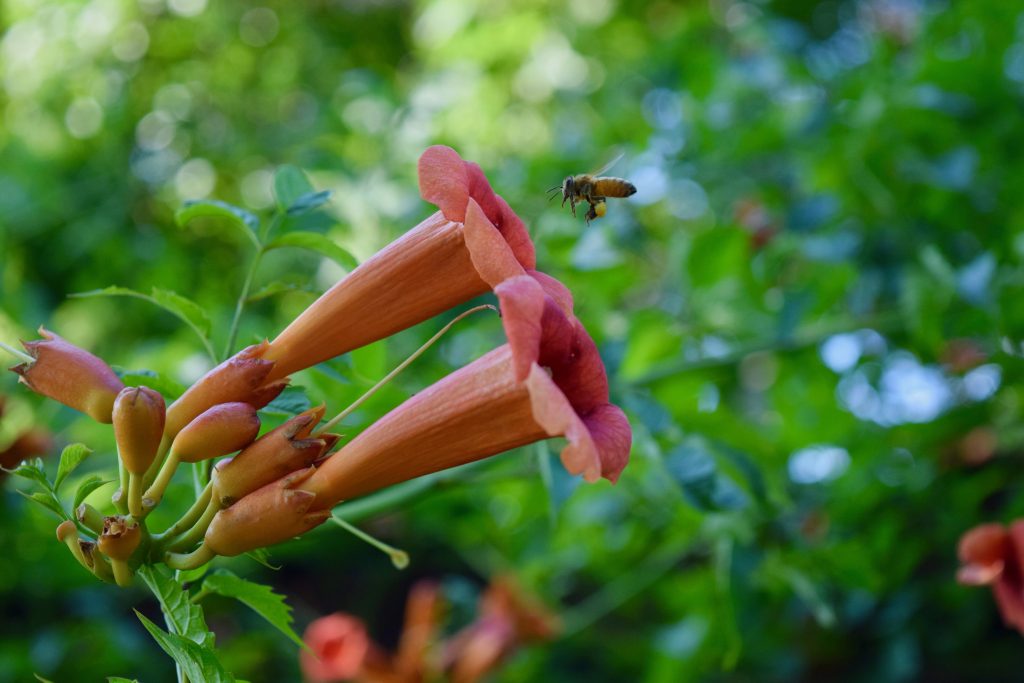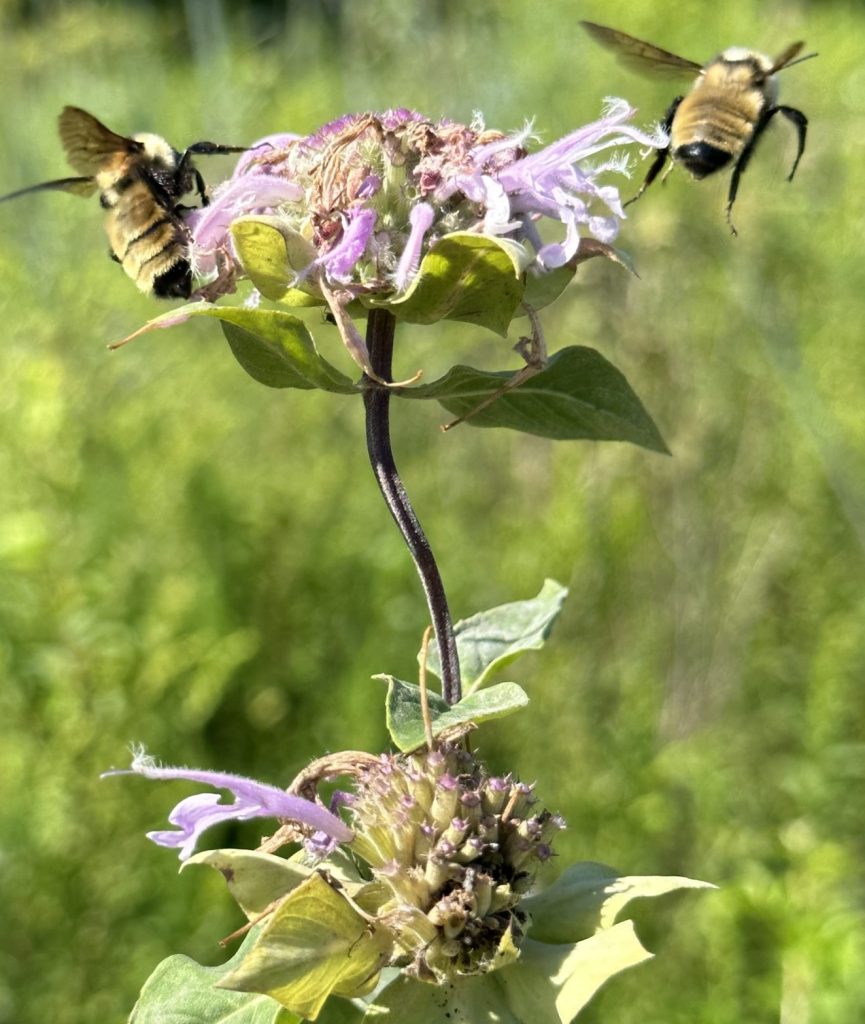Bees, Meadows, and Students: A Grassroots Effort to Restore Pollinators in South Kingstown
“On a hot August morning, a group of students from the University of Rhode Island crouched quietly in a meadow, clipboards in hand and eyes trained on the blooms of bee balm. Moments later, a flash of yellow and black darted through the flowers—a golden northern bumble bee, Bombus fervidus, one of the rarest native bee species in the state. They had found it.”
Protecting bee populations might not be at the top of most political agendas, but in South Kingstown, Rhode Island, it’s at the heart of a growing collaboration between land stewards, scientists, and students. Beginning in 2023, the South Kingstown Land Trust (SKLT)—a community-based nonprofit conserving over 3,000 acres of land—partnered with the Natural Resources Conservation Service (NRCS), the University of Rhode Island (URI), and the Connecticut Agricultural Experiment Station (CAES) to monitor native pollinators through the New England Pollinator Partnership. URI students and researchers from the Bee Lab have been surveying two SKLT-managed pollinator meadows—one off Matunuck Beach Road and the other at Hollis Tucker Farm—to track native bee and plant communities.
And they’ve made some exciting discoveries.
In just the first year, researchers observed a range of native bee species, including sweat bees, leafcutter bees, and Eastern carpenter bees—along with five different species of bumble bees. During one late-summer survey, they counted over a dozen golden northern bumble bees (Bombus fervidus) foraging on bee balm (Monarda fistulosa). This vulnerable species, identified as the rarest bumble bee in Rhode Island by a recent statewide survey, had never before been seen in such numbers on conserved land in South Kingstown.
URI students also helped identify two bee species—Triepeolus remigatus and T. lunatus—that had never before been documented in Rhode Island. Their findings highlight how even small patches of protected open space can support overlooked and at-risk species. Beyond bees, the meadows support monarch butterflies, hummingbird moths, and dozens of other pollinators—drawn in by carefully planted native species and the absence of pesticides.
The research aims to inform future conservation strategies by identifying which native plants most benefit bees and how landowners can create better habitats. URI students have been central to this work, not only collecting data but helping to shape long-term conservation plans rooted in science and community. At its core, this project shows what’s possible when local land trusts, public agencies, and universities come together. SKLT’s conserved meadows, once quiet corners of town, are now active sites of ecological renewal—and a reminder that meaningful environmental change often starts with the land beneath our feet.
I’m writing this as the newest member of the South Kingstown Land Trust team. With just four staff members, we’re a small but mighty group—and it’s been fascinating to see firsthand the work SKLT is leading to protect and restore our local environment.
Written by Tasha Sussman Moss

